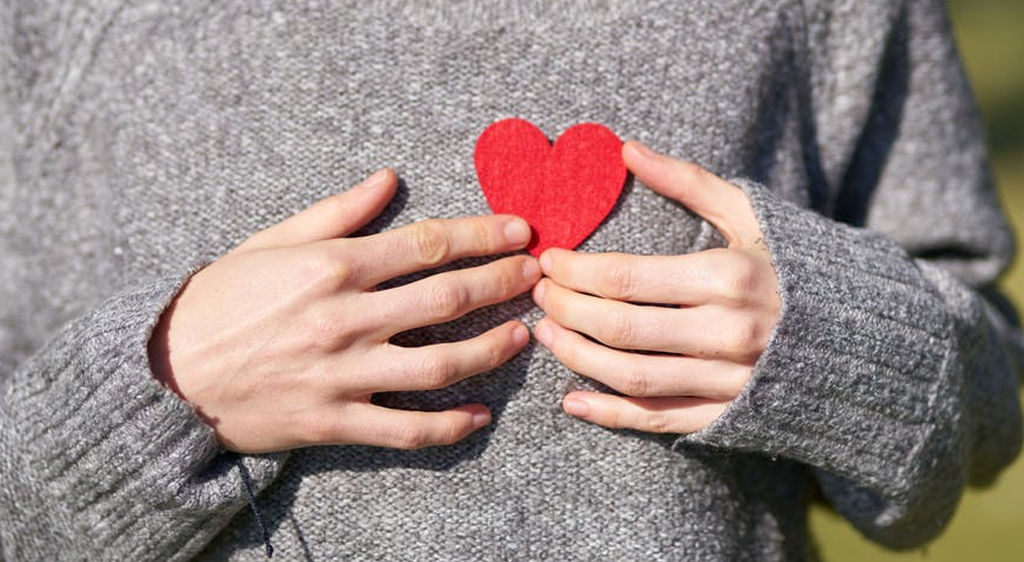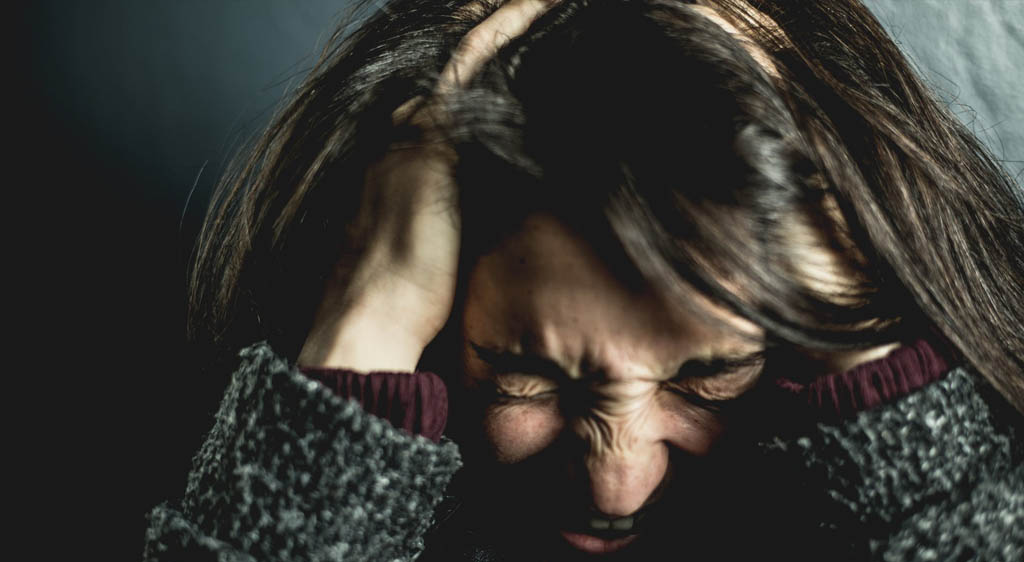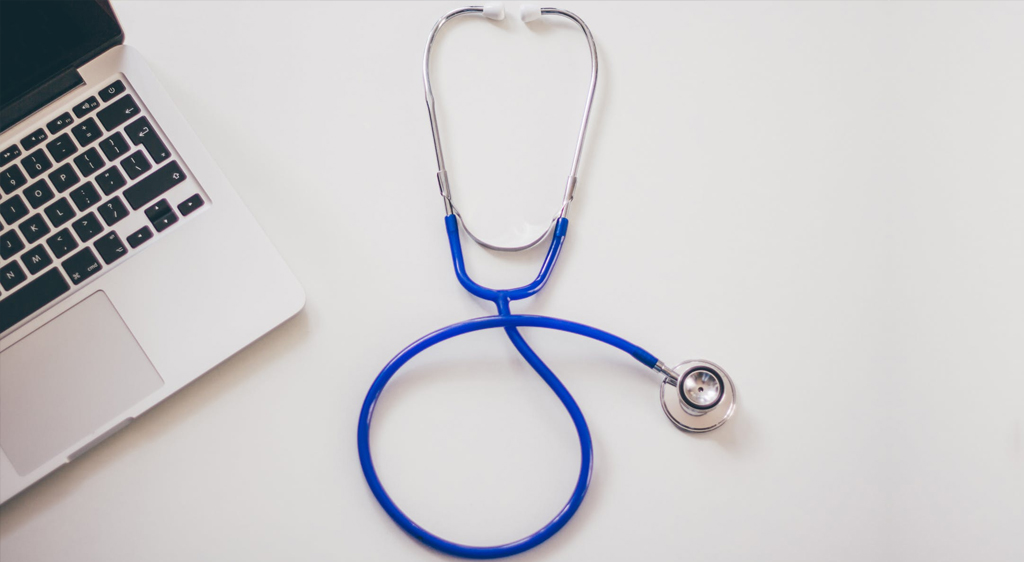Sleep Apnea Statistics
Even if some had enough time to sleep for at least 7 hours, they still strangely wake up tired. A possible reason is sleep apnea. A possible reason is sleep apnea. Sleep apnea is a sleep disorder in which a person repeatedly stops and resumes breathing This can even happen hundreds of times in one night.
Sleep-disordered breathing is mainly divided into three types. The first is obstructive sleep apnea (OSA) is more common. It happens when the soft tissue in the back of the throat collapses during sleep, blocking the airway. The other type is central sleep apnea. The airway is clear. However, the brain fails to signal to breathe due to an unstable respiratory control center. These three main types are further subdivided into three. The first is apneas, which are the complete or almost complete cessation of airflow. The second is hypopneas, which are a reduction in the airflow by 30 to 90%. The third is respiratory event-related arousals (RERA) which are a reduction of airflow by 30% or less and are associated with flow limitation and arousals. Sleep apnea severity is typically assessed with the apnea-hypopnea index (AHI). This is the number of apneas and hypopneas per hour of sleep.
As a result, the brain and the body may not get enough oxygen An indicator of sleep apnea is if you snore loudly and feel tired even after a full night’s sleep. Doctors do sleep studies to properly diagnose people with sleep apnea. Doctors usually monitor heart, lung and brain activity, breathing patterns, arm and leg movements, and blood oxygen levels during sleep. Doctors can do this at a clinic or give patients a home test that they can do themselves. (Mayo Clinic), (Webmd)
The Most Surprising Sleep Apnea Statistics
- More than 100 million people worldwide are estimated to suffer from sleep apnea.
- In the US, 75-80% of cases remained unidentified.
- Approximately 3-7% of men and 2-5% of women have sleep apnea.
- For women between 30 and 60 years old, 9% had an AHI greater than 5 per hour and 2% had both an AHI >5 and daytime sleepiness.
- For men between 30 and 60 years old, 24% had an AHI greater than 5 per hour and 4% had both an AHI >5 and daytime sleepiness.
- About 20% of children snore, but 1-4% of children aged between 2-8 suffer from OSA.
- Obstructive sleep apnea is associated with obesity in more than 60% of cases.
- Up to 83% of patients with type 2 diabetes suffer from unrecognized sleep apnea.
General Sleep Apnea Statistics and Facts
1. Gaining weight results in a 6-fold increase in the risk of developing moderate to severe obstructive sleep apnea.
In the Wisconsin Sleep Cohort, which was a study done over 4 years, people with a 10% increase in their weight was associated with a 32% increase in their AHI. On the other hand, a 10% decrease in weight was associated with a 26% decrease in the AHI.
(National Center for Biotechnology Information)
2. The ratio of sleep apnea between males and females is 2:1.
Men are twice as prone to suffer from sleep apnea as females. Even in the absence of any weight change, approximately 20% of men and 10% of women developed moderate to severe sleep apnea. This greater prevalence in males is still poorly understood. However, sex-specific hormones appear to be responsible. Androgens are known to make the upper airway collapse.
(World Health Organization), (National Center for Biotechnology Information)
3. People between 20 and 44 years old have lower occurrences of sleep apnea.
A study from Pennsylvania revealed that the prevalence of obstructive sleep apnea increased with age. In men, OSA was present in 3.2%, 11.3%, and 18.1% of the 20- to 44-year, 45- to 64-year, and 61- to 100-year age groups, respectively. In women, OSA was present in 0.6%, 2.0%, and 7.0% for the 20- to 44-year, 45- to 64-year, and 61- to 100-year age groups, respectively.
(American Journal of Respiratory and Critical Care Medicine)
4. Research reveals over 50% of adults over the age of 65 years have some form of chronic sleep-related complaints.
Researchers found that 70% of men and 56% of women between 65 and 99 years of age had obstructive sleep apnea defined as an AHI of at least 10 events per hour.
(American Journal of Respiratory and Critical Care Medicine)
5. Obstructive sleep apnea can be present in approximately 5.5% of post-menopausal women.
In contrast, sleep apnea statistics showed OSA was present in approximately 0.6% of pre-menopausal women and approximately 1.1% in intermediate in post-menopausal women on hormone replacement therapy.
(American Journal of Respiratory and Critical Care Medicine)
Sleep Apnea Depends on Ethnicity 6. Sleep apnea rates differ among ethnicities.
6. Sleep apnea rates differ among ethnicities.
The strongest evidence for a racial disparity in OSA exists with regards to African Americans, who have the highest rates of OSA. Hispanics have similar rates of OSA with Caucasians. Although, some more recent studies have reported a higher prevalence in Hispanics. Asians and Asian Americans appear to have similar or lower OSA rates than those of Caucasians.
(National Center of Biotechnology Information)
7. In the US, sleep apnea statistics show that African American children are associated with a 20% increase in obstructive sleep apnea severity.
Several studies found a higher rate of OSA in African American children. African American children are 4-6 times more likely to have OSA compared to white children. Even among people less than 26 years of age, African Americans are 88% more likely to have OSA as compared to whites.
(American Journal of Respiratory and Critical Care Medicine), (National Center of Biotechnology Information)
8. Obstructive sleep apnea statistics show that Hispanics with sleep-disordered breathing range from 3.9 to 25.8%.
The Hispanic Community Health Study monitored over 14,000 Hispanics between 18 and 74 years old. Overall, 25.8% had OSA SDB, 9.8% had moderate or more severe OSA, and 3.9% had severe OSA. Only 1.3% were diagnosed with sleep apnea.
(American Journal of Respiratory and Critical Care Medicine)
9. OSA is 30-40% higher in Hispanic men than in women.
Among men, OSA prevalence was highest among those of Cuban and “mixed/other” backgrounds and lowest among men of Puerto Rican and South American backgrounds.
(American Journal of Respiratory and Critical Care Medicine)
10. 7.6% and 5.4% of Hispanic men and women had episodes of breathing cessation.
Men with Cuban and Puerto Rican backgrounds had the highest prevalence of breathing cessation while men with South American and Mexican backgrounds had the lowest. Women with Puerto Rican backgrounds had the highest prevalence with 7.9% while those of Mexican backgrounds had the lowest with 3.9%.
(American Journal of Respiratory and Critical Care Medicine)
11. Daytime sleepiness was reported by 18.2% of men and 18.5% of women.
Men, with Puerto Rican and South American backgrounds, had the highest scores of daytime sleepiness while Cuban men had the lowest. Likewise, Cuban women had the lowest sleepiness score compared with other Hispanic backgrounds.
(American Journal of Respiratory and Critical Care Medicine)
12. Obstructive sleep apnea occurs in 18.4% of Japanese.
OSA occurs in 36.5% of Caucasians, roughly twice as much as Japanese.
(National Center for Biotechnology Information)
13. Obstructive sleep apnea occurs statistics show that nearly 5% of Iranians are affected.
In 3,529 subjects, researchers found that 176 (4.98%) were suspected to have OSA. This group consisted of 74 (42%) males and 102 (58%) females. In another study, Iranian professional drivers with a large neck circumference had higher risks of sleep apnea.
(Springer Link)
14. About 51.9% of Taiwanese snore and 2.6% have obstructive sleep apnea.
In a study done on 4,011 Taiwanese, snoring was prevalent in 60.8% of the males and 42.5% of the females. On the other hand, OSA was present in 3.4% of the males and 1.9% of the females.
(Cite Seer X)
15. A study in Indonesia found that 38.2% of obese early adolescents had obstructive sleep apnea.
Researchers were able to diagnose 110 Indonesian children between 10 and 12 with OSA. These children were also obese and complained about snoring.
(Acta Medica Indonesiana)
16. A study on 2,150 subjects found that India and Western countries had similar OSA prevalence and risk factors.
In the study, 13.74% of habitual snorers and 3.57% nonhabitual snorers had OSA. The prevalences of OSA and OSA syndrome (which is accompanied by daytime sleepiness) in men were 19.7% and 4.9%, respectively. The prevalences of OSA and OSAS in women were 7.4% and 2.1%, respectively.
(Sciences Direct)
17. Obstructive sleep apnea was present in 14.1% of a group of Filipinos with type 2 diabetes.
This study was done on 317 adult Filipinos with type 2 diabetes, and it also found that 21% of the subjects had high OSA risk. High OSA risk was associated with hypertension, obesity, increased waist circumference, and other health detriments.
(Herdin)
18. Sleep apnea increases risks of other diseases.
Sleep apnea does more than make people tired. People with the disorder increases their risk of other health problems that include, hypertension, diabetes, and more.
(Healthline)
Sleep Apnea Increases Risks of Cardiovascular Diseases
19. Obstructive sleep apnea statistics show that hypertension is also present in 30 to 70% of OSA patients.
Sudden drops in blood oxygen levels that occur during sleep apnea increase blood pressure and strain the cardiovascular system.
(National Center for Biotechnology Information), (Mayclinic)
20. Obstructive sleep apnea increases the risk of heart failure by 140%.
Repetitive apneas cause an exaggerated drop in intrathoracic pressure. As a consequence the heart fails to pump enough blood each time it beats, leading to heart failure.
(National Center of Biotechnology Information)
21. Obstructive sleep apnea increases the risk of stroke by 60%.
Strokes happen when the brain doesn’t get enough blood. Thus OSA increases the chances of getting a stroke. The intermittent hypoxia in OSA also leads to inflammation that damages blood vessels, blocking the blood supply to the brain. Moreover, since OSA increases blood pressure, platelets tend to aggregate, further cutting off blood supply.
(National Center of Biotechnology Information)
22. Obstructive sleep apnea increases the risk of coronary heart disease by 30%.
Atherosclerosis is the primary cause of coronary heart disease. Oxidative stress is enhanced in atherosclerosis, leading to blood vessel damage. In OSA patients, repeated hypoxia and reoxygenation during sleep can increase oxidative stress and thus and lead to atherosclerosis. Atherosclerosis is a chronic state of inflammation, and the OSA can exacerbate this since repeated hypoxia also causes inflammation. The accumulation of these events eventually lead to coronary heart disease.
(National Center of Biotechnology), (Hindawi)
Other Health Disorders Influenced by Sleep Apnea
23. Type 2 diabetes was present in 30.1% of people with obstructive sleep apnea.
Researchers who studied 1,008 subjects found that type 2 diabetes was present in 30.1% in a group with OSA. In contrast, type 2 diabetes was present in 18.6% in a group without OSA. The repeated hypoxia in OSA causes numerous molecular events whose net result is reduced insulin sensitivity and blood glucose effectiveness.
(National Center of Biotechnology Information), ( American Diabetes Association Diabetes Spectrum)
24. Sleep apnea leads to weight gain.
It’s already known that obesity increases the risk of developing obstructive sleep apnea. Fat can accumulate in the neck area, obstructing breathing. However, having sleep apnea can also contribute to weight gain. Poor sleep quality influences the production of hormones related to appetite. Moreover, the daytime sleepiness that sleep apnea can cause can decrease physical activity. This consequently makes it harder for overweight people with sleep apnea to lose weight.
(Sleep Foundation)
25. Obstructive sleep apnea statistics show that the OSA was present in 27% of patients with asthma.
Asthma is a common chronic disorder of the airways that involves complex interactions among airflow obstruction, hyperresponsiveness, and inflammation. Researchers have proposed many mechanisms by which OSA contributes to asthma, such as bronchus constriction, upper airway irritation, gastroesophageal reflux, and inflammation. Moreover, those who already have asthma can experience worse symptoms if they also suffer from sleep apnea.
(National Center for Biotechnology Information)
26. Obstructive sleep apnea statistics show that the OSA was present in 60% of patients with gastroesophageal reflux.
Although the connection between gastroesophageal reflux disease (GERD) and sleep apnea is still poorly understood, there are already many reports that link the two. In GERD, stomach acid flows back and irritates the esophagus. Sleep apnea changes the pressures within the diaphragm and the chest cavity. Moreover, apneas can make the lower esophageal sphincter (LES) relax. The LES is a ring of muscles between the esophagus and the stomach. These events can allow stomach acid to flow back.
(National Center for Biotechnology Information)
Sleep Apnea Worsens Psychiatric Disorders
27. Studies find that obstructive sleep apnea is associated with psychiatric disorders.
Researchers observe that OSA is prevalent in individuals with various psychiatric disorders such as majorr depressive disorder, posttraumatic stress disorder, anxiety disoder, and many more. Researchers and doctors now know that treatment of both disorders should be considered for optimal best outcomes.
(National Center for Biotechnology Information)
Sleep Apnea Treatments
28. Lose weight.
Since obesity increases the risk of sleep apnea, specifically OSA, sleep experts suggest lifestyle changes to maintain a healthy BMI.
(Webmd)
29. Sleep apnea statistics show that only 30 to 60% of patients comply with the most common treatment.
A continuous positive airway pressure (CPAP) device is the most common treatment for sleep apnea. It uses mild air pressure to keep the airways open. However, the rate of compliance is low. A CPAP device includes a mask that covers the nose, or mouth, or both, a tube that connects the mask to the CPAP motor, and the motor that blows the air. Although effective in letting the patients breathe, the device is bulky and many find it uncomfortable.
(National Center for Biotechnology Information), (Association of Polysomnographic Technologist)
30. Oral appliances have a success rate of 54%.
Oral appliances can be worn during sleep. These are like mouthpieces designed to keep the airway open. These are given by dentists who also specialize in sleep-breathing disorders. Although these are not as effective as CPAP devices, others find oral devices to be more bearable. Patients who had success with oral appliances say their quality of life improved.
(National Center for Biotechnology Information)
31. Surgery is a last resort.
Going under the knife is always a last resort. However, for others who have special medical conditions that narrow their throat, surgery may be the most effective solution. Conditions that narrow the throat are These conditions include enlarged tonsils, a small lower jaw with an overbite, or a deviated nasal septum. There are three common sleep apnea surgeries. Nasal surgery fixes nasal problems such as a deviated septum. A uvulopalatopharyngoplasty (UPPP): This takes out soft tissue from the back of your throat and palate, clearing your airways. Mandibular maxillomandibular advancement surgery fixes certain facial problems or throat blockages that play a role in sleep apnea.
(Mayoclinic)
Conclusion
Since sleep apnea manifests during sleep, many people may not know they have it. Unfortunately, sleep apnea statistics indicate that it is prevalent in the world, so people have to be vigilant for symptoms or effects that can only be observed when they are awake. Sleep is a crucial biological function that keeps us healthy. Any disorder that lowers the quality and quantity of sleep can also lower the quality of life.
List of Sources
WebMD:
https://www.webmd.com/sleep-disorders/sleep-apnea/sleep-apnea
Mayank Vats:
WHO, 2007:
https://www.who.int/gard/publications/chronic_respiratory_diseases.pdf
Punjabi, 2007:
https://www.ncbi.nlm.nih.gov/pmc/articles/PMC2645248/#!po=2.38095
Bixler et al., 2001:
https://www.atsjournals.org/doi/full/10.1164/ajrccm.163.3.9911064
Dudley and Patel, 2016:
https://www.ncbi.nlm.nih.gov/pmc/articles/PMC4602395/#!po=7.03125
Weinstock et al., 2014:
https://www.ncbi.nlm.nih.gov/pmc/articles/PMC3900616/?report=reader
Redline et al., 1997:
https://www.atsjournals.org/doi/abs/10.1164/ajrccm.155.1.9001310
Redline et la., 2014:
https://www.atsjournals.org/doi/full/10.1164/rccm.201309-1735OC
Yamagishi et al., 2010:
https://www.ncbi.nlm.nih.gov/pmc/articles/PMC2895689/?report=reader
Amra et al., 2011:
https://link.springer.com/article/10.1007/s11325-010-0353-4
Amra et al., 2012:
https://link.springer.com/article/10.1007/s11325-010-0473-x
Chuang et al., 2008:
http://citeseerx.ist.psu.edu/viewdoc/download?doi=10.1.1.515.7634&rep=rep1&type=pdf
Supriyatno, et al., 2010:
http://www.inaactamedica.org/archives/2010/20724769.pdf
Kumar et al., 2006:
https://www.sciencedirect.com/science/article/abs/pii/S0012369215509653
Lantion-Ang et al., 2008:
http://www.herdin.ph/index.php/component/herdin/?view=research&cid=3786
Healthline:
https://www.healthline.com/health/sleep-apnea/effects-on-body#1
Fletcher et al., 1985:
https://www.ncbi.nlm.nih.gov/pubmed/4014900
Mayo Clinic:
https://www.mayoclinic.org/diseases-conditions/sleep-apnea/symptoms-causes/syc-20377631
Jean-Louis et al., 2008:
https://www.ncbi.nlm.nih.gov/pmc/articles/PMC2546461/
Khattack et al., 2008:
https://www.ncbi.nlm.nih.gov/pmc/articles/PMC6059510/
Jehan et al., 2018:
https://www.ncbi.nlm.nih.gov/pmc/articles/PMC6340906/#!po=17.5676
De Torres-Alba et al., 2013:
https://new.hindawi.com/journals/pm/2013/768064/
Mahmood et al., 2009:
https://www.ncbi.nlm.nih.gov/pmc/articles/PMC2699165/
Doumit and Prasad., 2016:
https://diabetesjournals.org/spectrum/article/29/1/14/32183/Sleep-Apnea-in-Type-2-Diabetes
National Sleep Foundation:
https://www.sleepfoundation.org/articles/connection-between-weight-and-sleep-apnea
Dixit 2018:
https://www.ncbi.nlm.nih.gov/pmc/articles/PMC5946549/#!po=13.6364
Alkhalil et al., 2019:
https://www.ncbi.nlm.nih.gov/pmc/articles/PMC2637171/pdf/jcsm.5.1.71.pdf
Jung et al., 2010:
https://www.ncbi.nlm.nih.gov/pmc/articles/PMC2879818/
Gupta et al., 2015:
https://www.ncbi.nlm.nih.gov/pmc/articles/PMC4298774/
WebMD:
https://www.webmd.com/sleep-disorders/sleep-apnea/sleep-apnea-treatments
Rotenberg et al., 2016:
https://www.ncbi.nlm.nih.gov/pmc/articles/PMC4992257/
Association of Polysomnographic Technologists:
https://www.aastweb.org/blog/what-is-cpap-continuous-positive-airway-pressure-therapy
Hoffstein 2007:
https://www.ncbi.nlm.nih.gov/pmc/articles/PMC1794626/
Mayo Clinic:
https://www.mayoclinic.org/diseases-conditions/sleep-apnea/diagnosis-treatment/drc-20377636
 6. Sleep apnea rates differ among ethnicities.
6. Sleep apnea rates differ among ethnicities.


